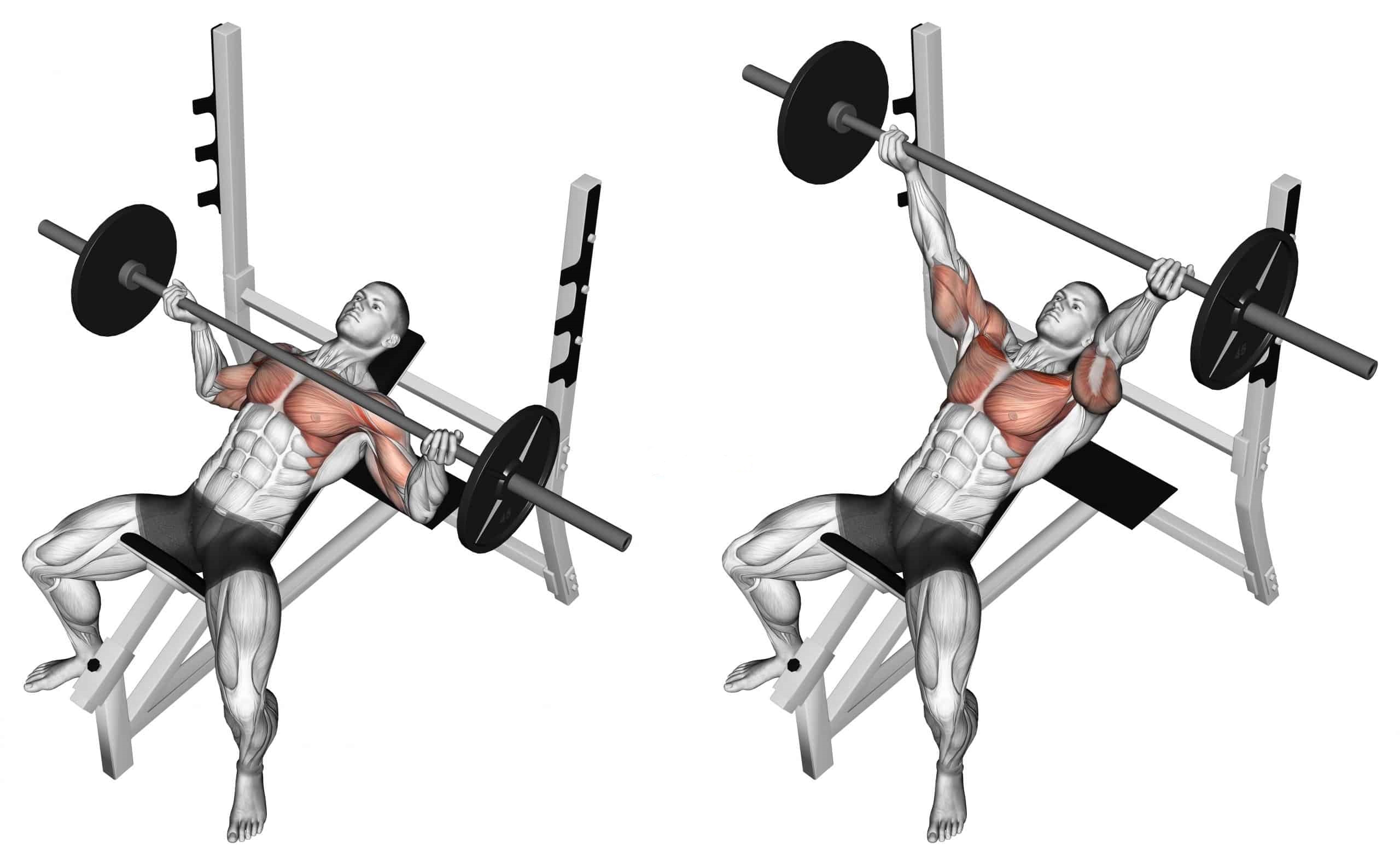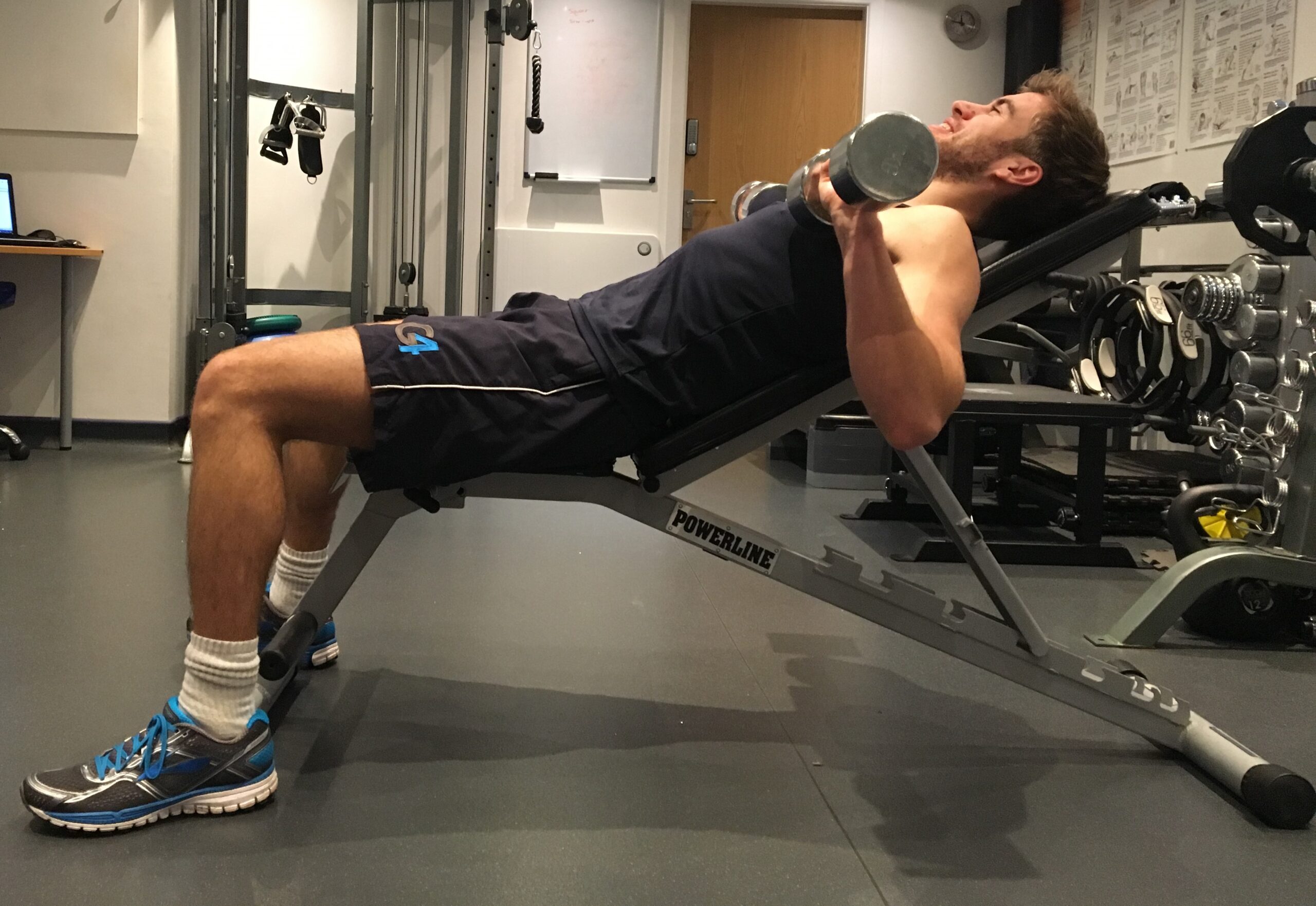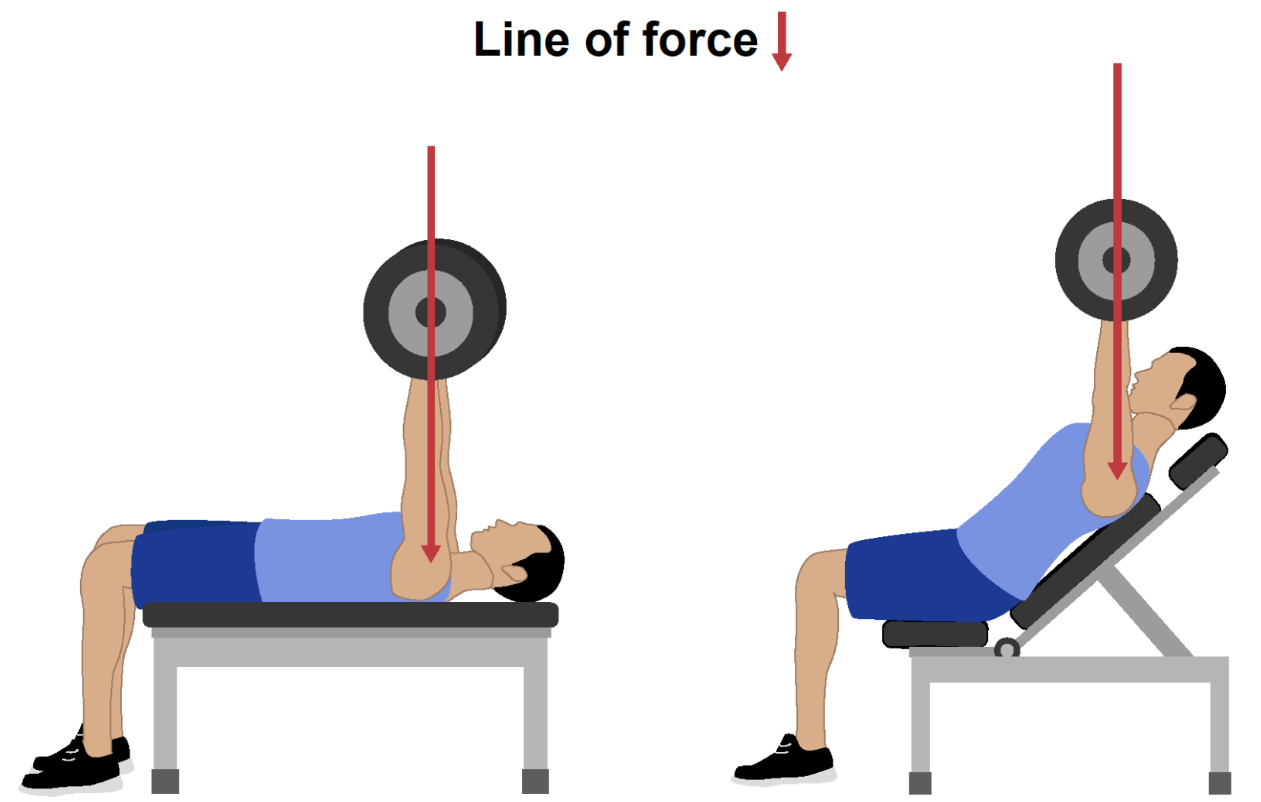
The incline bench press is one of the most popular exercises for developing the front muscles of the shoulders and upper chest muscles. This press exercise uses a 30-45-degree angle and can provide many benefits. Let’s learn about its benefits, how to perform it, and tips.
What are the Benefits of Incline Bench Press?

This is one of the essential exercises for many people to achieve their fitness goals. This press exercise is highly recommended for those who want better upper chest muscles. The way to do it is quite simple so it is favored by many people but requires quite a lot of effort.
The feature of this bench exercise is to set the bench at an angle of about 30-45 degrees. The bench setting can focus on developing the shoulders, triceps, and upper chest. As a personal trainer, I often recommend this bench press. It’s an efficient approach that I believe can optimally support chest muscle muscle-building
Find out more about the benefits of incline bench press exercise:
1. Better Muscle Symmetry
The main focus of this exercise is the upper chest muscles. Incline bench exercises can support optimal symmetry to develop your muscles. You can expect a balanced and symmetrical chest from this exercise. So what are the benefits of such a chest shape?
You can avoid injuries because the muscles are balanced and it looks better visually too.
2. Safe For Those With Shoulder Problems
This is an exercise that is safe for the shoulder joints as the body is placed at a different angle. Unlike the flat bench press which may put more pressure on the shoulders. If you have an injury or other shoulder problem, then this is the recommended training solution. You can still effectively work your chest muscles but it’s safer from potential injury.
Even so, this exercise can still increase the anterior deltoid or the front of the shoulder effectively. So, you can expect more stable and strong shoulders as well.
3. Avoiding The Plateau
What is a plateau? It’s a phase of stagnation in exercise progression that tends to lead to low motivation, lack of progression, and boredom. You can try different variations of the incline bench press including with dumbbells, bands, or a close-grip approach. You can develop or challenge your physique for better results than before.
4. Supports Exercise Efficiency
If you don’t want to spend time on exercise, you can consider this bench press. It’s a composite and simultaneous exercise for multiple muscle groups. You can get the many benefits of exercising more efficiently.
In addition to focusing on the main muscles, this press exercise can also have a good effect on the stabilizer muscles. You can get the benefits of body coordination and balance.
5. Improves Pectoralis Major
If we’re talking about incline bench press, then of course the main benefit is for the pectoralis major or chest muscles at the top. Instead of a flat bench, an incline bench can optimally activate the pectoralis major muscle fibers through an inclined position.
If you want to look especially proportionate and full in the chest, then this is a muscle-building exercise that should become a routine.
6. Great For Triceps Muscles Too
More than that, you can develop your triceps muscles too with this bench press. The upward thrust of the weight makes the triceps work because it has to straighten the arms. You can expect bigger and stronger triceps with this exercise.
7. Helps Optimize Daily Workouts
Another benefit is that it is great for your functional strength or performance of daily activities such as lifting objects. Our daily activities may require movements similar to incline bench press from the angle. With regular practice, you can perform daily activities efficiently and optimally.
How To Do Incline Bench Press?

Start with preparation, set the bench first to incline 30-45 degrees and then sit on it. Position your feet on the floor, buttocks, and upper back touching the bench comfortably. Prepare the barbell and hold it, the grip is made wider than the shoulders but just a little.
Position the barbell above your chest until your arms are straight and then slowly lower it to the top of your chest. For more precision, lower it above the sternum for optimal results. You need to keep your elbows at a 45-degree angle. It’s better to avoid extending or getting too close to the body.
Push the barbell back to the starting position using your shoulders and chest. You need to make sure your elbows are not fully locked at the top and repeat this exercise for up to 3 or 4 sets. For optimal results, perform 8-12 reps, maintain full control, and avoid lowering the barbell too quickly.

Proper and Safe Tips to Incline Bench Press Exercise
Make sure you warm up first to avoid injury and optimize blood flow to the muscles. Consider relying on a spotter if you want to try heavier weights. Don’t forget about proper technique because proper movement is more important than more weight.
The proper position is your back touching the bench without bending or slouching. You also need to control your breathing properly. When lowering the barbell, you can inhale and then exhale when pushing the barbell back up.
FAQ
What are the benefits of an incline bench press?
The main focus of this press exercise is your upper chest muscles. You can get a visual of a well-proportioned, well-defined, and balanced chest.
Does the incline bench press use 30 or 45 degrees?
You can do it at any of these angles. But the best advice is 30 degrees because it can target the upper chest muscles more optimally.
Can you only do an incline bench press?
You can do this exercise as much as you can but you can vary it with the flat bench press. Do the incline bench exercise with 8-12 reps in 3 or 4 sets.
How to do an incline bench press?
Position the bench at a 30-45 degree angle and lie down, making sure the spine is neutral and the feet are flat on the floor. Holding the barbell slightly wider than shoulder width, raise and lower the barbell by bending the elbows.
Is the incline bench press the most difficult?
Because the angle of inclination is 30-45 degrees, incline bench press can put great pressure, especially on the upper chest and shoulder muscles. Compared to decline or flat bench presses, incline is more difficult.
Do you know that incline bench press is one of the most popular workout in bodybuilding?
See this workout in action!

Guntur is a bodybuilding and powerlifting enthusiast. He is also the main author of this blog https://learn-bodybuilding.com/
Guntur also works as a Personal Trainer in his town.
In his free time, he likes to learn new languages and reading.
You can contact him from this website’s Contact Page.